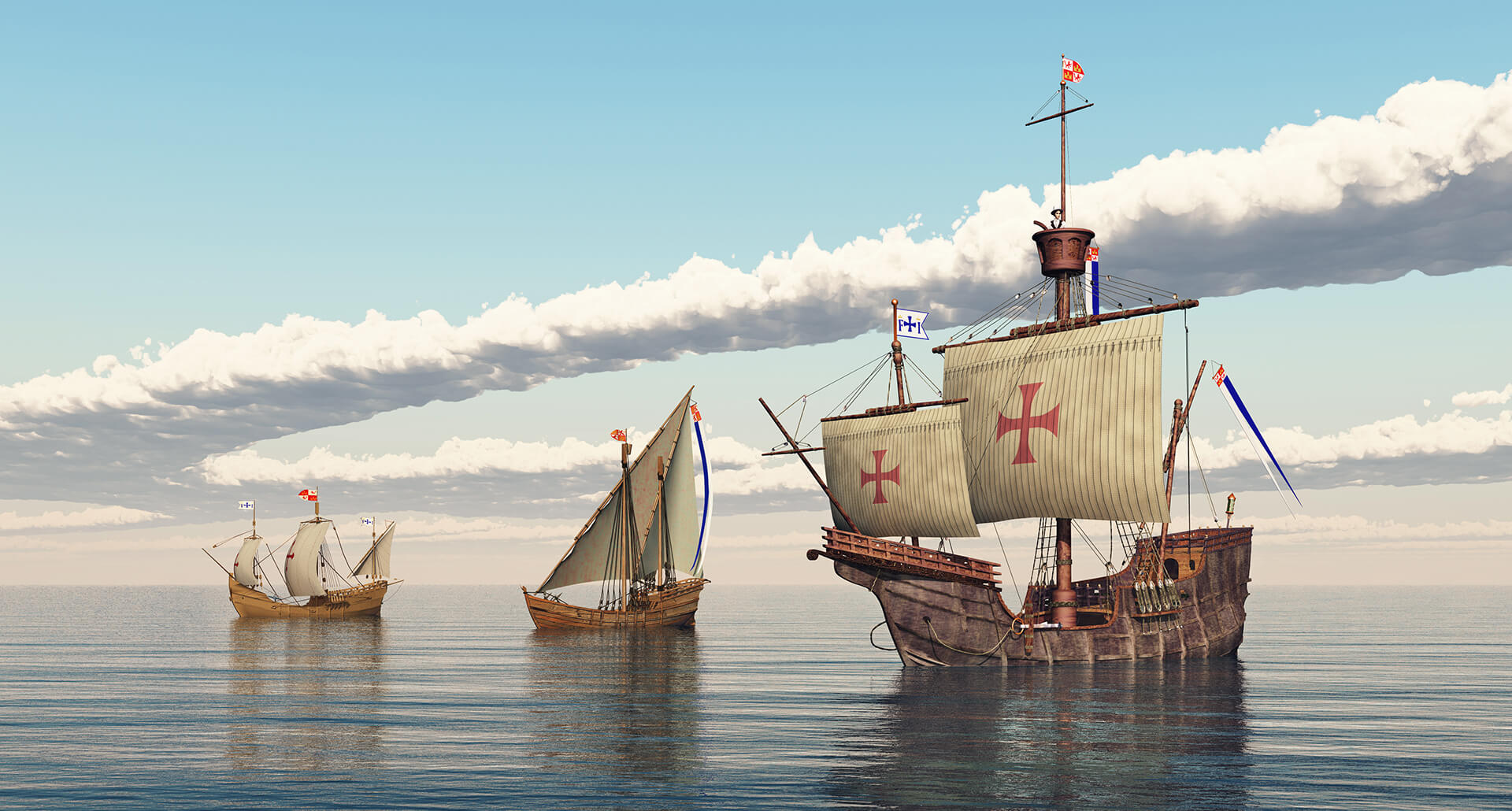Christopher Columbus is considered worldwide as the true and only discoverer of the Americas. However, it didn’t actually go like that. The American lands were discovered and explored, little by little, by numerous conquistadors and, apart from Columbus, above all, by the Italian Amerigo Vespucci and the Portuguese Magellano. Colombo, in fact, should be credited more with the discovery of what is now the current Colombia, and therefore of the southernmost part of the American continent. Amerigo Vespucci was the first to land on real American shores and, especially, was the first to realize that he was not in Eurasia but on a new continent, forever revolutionizing the geographical conception of the earth’s globe.
Cristoforo Colombo discovers America
The discovery of America by Christopher Columbus happened by chance, strange but true. The Genoese explorer had, in fact, left for the Indies with the aim of reaching them by circumnavigating Africa, both to prove that the earth was actually round (which, at the time, was thought to be just a weird theory, since it was a rather common belief that the earth’s surface was flat) and for socio-economic interests. The men of that era had in fact just started the first long sea expeditions, to expand their boundaries as well as to import and export fine products, among which spices had a very important place, as they were bought at very low cost to be resold at dizzying prices in Italy and in other Western countries, especially Spain and Portugal. Long sea expeditions were made possible above all by new discoveries in the navigation field.
The discovery of America: a casual mistake
It was in this climate of ferment that the Genoese Cristoforo Colombo asked the sovereign of Portugal to finance his expedition, which had categorically been rejected by the Italian nobility. However, he obtained another refusal, instead his ideas were positively received by the Spanish sovereigns, Ferdinand of Aragon and Isabella of Castile. The expedition therefore left on August 3rd , 1492 from the port of Palos. Columbus traveled with three ships: the Nina, the Pinta and the Santa Maria (the famous three “caravels”). After a stay of about a month in the Canary Islands to restock, Columbus’s crew traveled for a month without seeing land. After that he finally landed in the current southern Americas on October 12th , 1492, officially recognized as the day of the “Discovery of America“, more precisely in a land that he named “San Salvador”. Columbus, however, because of the calculation errors of the first rudimentary planispheres, was convinced of being in Asia and not on a still unexplored continent.

The first effects of colonization
Returning to Spain on March 15th , 1493, Christopher Columbus took with him some natives, gold and numerous parrots. A number of subsequent expeditions were then organized in order to colonize the new territories. The indigenous Americans (or “Amerindians”) were a rudimentary people, skilled in hunting and fishing, who still used the barter as a form of payment and that did not yet know many of the tools of the modern era (among them the wheel). The natives suffered greatly from the effects of this colonization, with both physical and social repercussions, since they were easily blackmailed due to their cultural gaps. They were in fact negatively influenced by the use of horses and firearms by the colonizing peoples, unknown to them.
How was America really born? All the discoveries made by Italians from Colombo onwards

As we have already mentioned, initially Spain and Portugal devoted themselves to the colonization of American lands without really understanding the fact of being on a “new” continent. At the time, explorations were taking place by many “Conquistadores“, among which are remembered for importance that of Hernán Cortés and Francisco Pizzarro. The former was mainly concerned with the Aztec population (Mexico), the latter of the Incas (Peru).
Amerigo Vespucci
It was only at the beginning of the 16th century, however, that someone realized that the lands discovered by Columbus were not part of the Eurasian continent, and this was another Italian, Amerigo Vespucci, native of the beautiful Florence.

Amerigo Vespucci was the true protagonist of the discovery of America: he managed to land on the coasts which Columbus had yet to explore on the southern Atlantic side, which took the name of America in his honor. The lands explored by Columbus instead were called with the name Colombia.
Magellano
The last great discovery was that of the Portughese Magellan, who started from Sanlucàr in 1519 trying to continue Vespucci’s discoveries, he managed to cross the strait that took his name, and then finally landed, in 1521, on the Philippine coasts.

